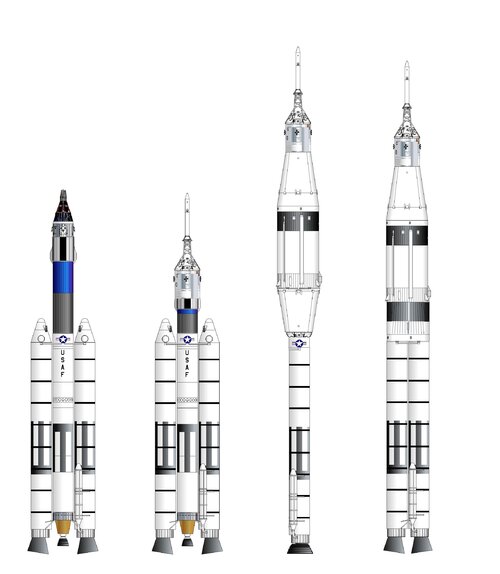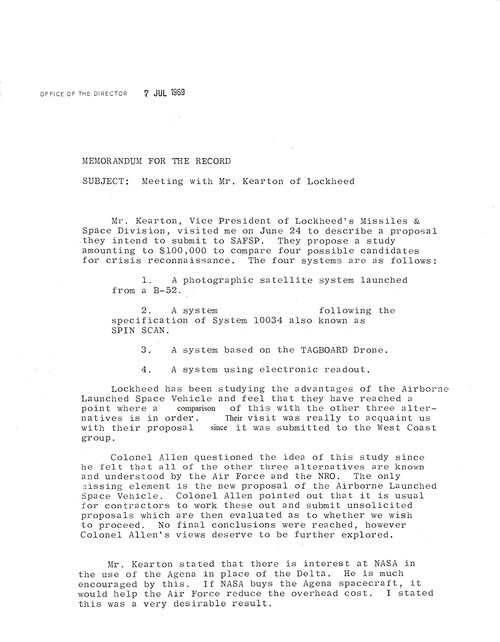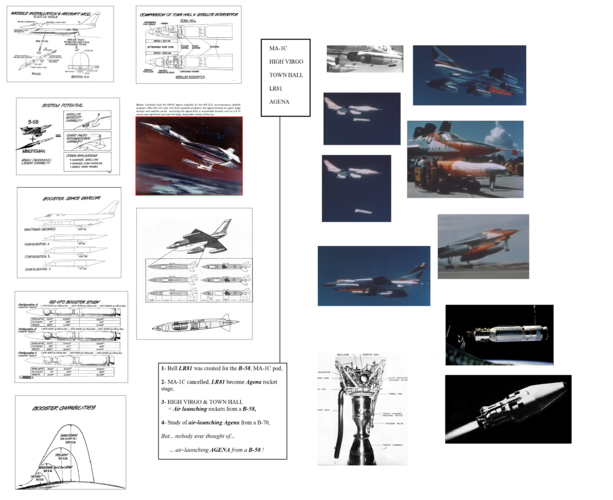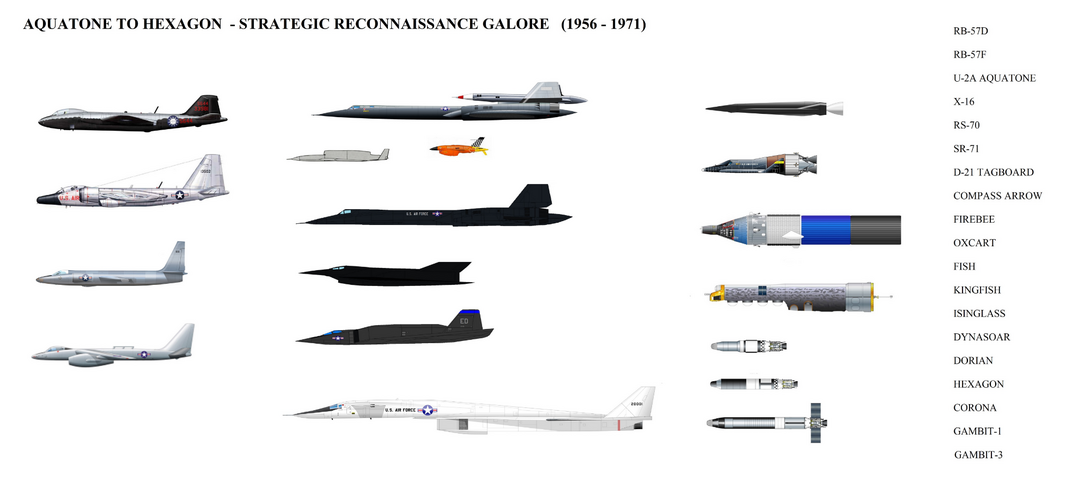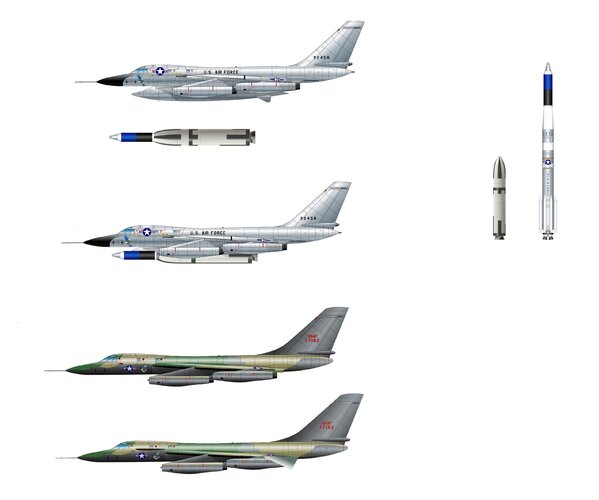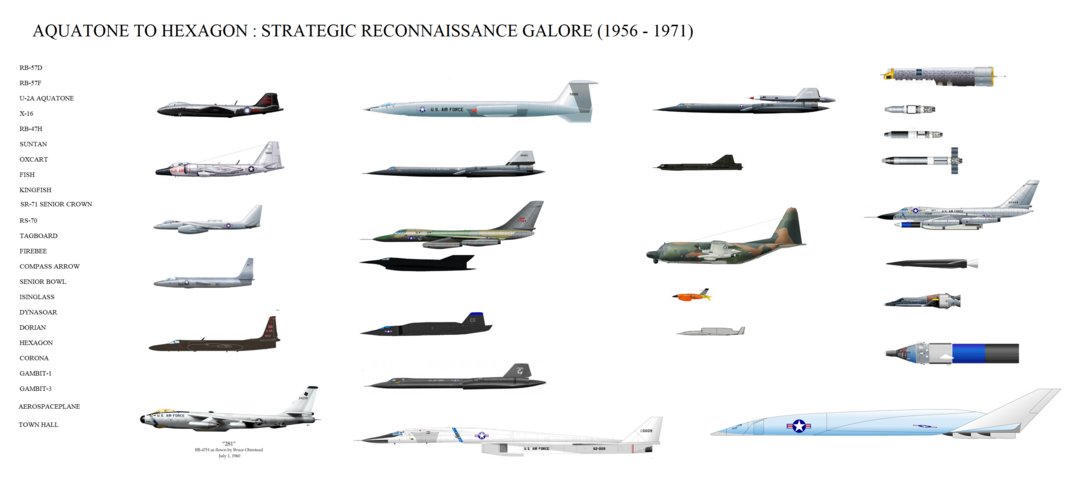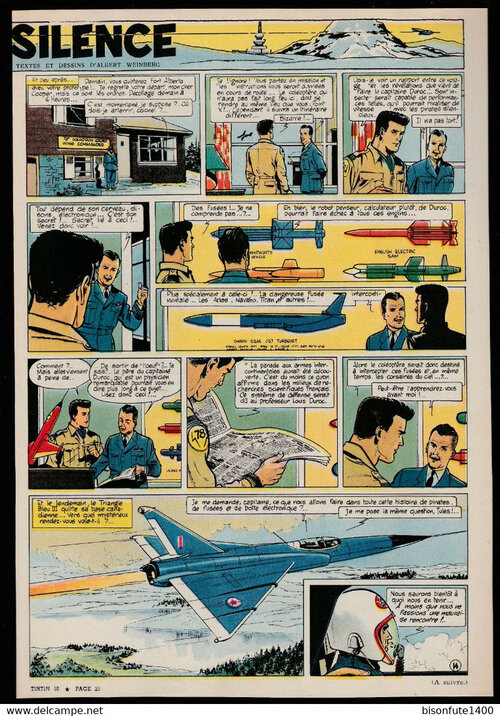Lockheed space division – Sunnyvale, California.
August 1962
"So that's project TOWN HALL ?
"Yes. We want to bolt a spysat camera package to a Polaris missile and drop that from a SR-71 at Mach 3. What do you think about it ?"
Owen Gordon took a deep breath and decided to go into full frankness mode.
"The idea is interesting for sure, but you are doing it like shit."
He heard muffled swearing and knew he had hit the nail on the head.
"Sorry for the crude words, but that's my gut feeling.
"All right, we appreciate your frankness. But you told us the idea has potential. Explain yourself: how would you improve it ?
"You won't gonna like it." he smiled. "Because, first, even as a Lockheed worker, sorry to tell you Convair's B-58 Hustler would make a much better carrier even if slower and... not Lockheed. Scoop: TOWN HALL might be CIA, but the Air Force nowadays has the exact same concept of an air launch Polaris spysat package, except from a B-58. The difference in top speed, mach 2 vs mach 3, by orbital velocity standard is insignificant: 400 m/s over 9000 m/s. B-58 boost is 1600 m/s, SR-71 would remove 2000 m/s: not worth the additional complication related to the carrier. Hustler is almost perfect for that job, because the big pod and tall undercarriage."
"Ok, we can live with that. In HIGH VIRGO we did exactly that: a Lockheed rocket dropped from a Hustler. You worked on that, did you ?"
Owen smirked. "Was my ticket entry into Sunnyvale: the land of Agena spysats, in 1959. Now let's talk about the rocket and the spysat package at the tip. You confirm this would be either a SAMOS or CORONA, with the Agena removed ?"
"Yes."
"Well, this is pure idiocy; they are shooting themselves in the foot. Since we Lockheed build both Agena and Polaris, we know that Agena has far better performance overall: because it is a liquid fuel orbital upper stage, rather than a suborbital nuclear ballistic missile. Plus solid-fuel performance really sucks. Now imagine you keep the Polaris as booster, but reinstate the Agena between it and the camera package: not only as the spysat bus but also as a propulsive stage."
"So it becomes a four parts vehicle ?"
"My point exactly: Hustler-Polaris-Agena-camera, let's put it that way. My preliminary calculation shows that if we grew and optimized such booster to max out B-58 belly pylon capability – calculated at 65 000 pounds by the Air Force – we could throw a very respectable payload to orbit: straight out of a runway. Just like a Hound Dog or a Skybolt, it could be just one more SAC bomber ammunition or missile, packaged and sealed like a Bullpup missile. Unlike present spysats launching from Vandenberg rocket pads, it could be launched on demand if a major crisis broke out. It would have the inner flexibility of a U-2 or A-12 manned spyplane... except it would be an almost invulnerable or untouchable spysat.
"Excellent, so you want to sell that as a flexible crisis reconnaissance system ?"
"Yeah. Because present spysats takes one week to drop their film into capsules."
"Well, all good, but you just have shot your own system, right now."
"What ?"
"You are complaining about film recovery capsules not being responsive enough during crisis: taking a week to send back the pictures, against a few hours for, say, an A-12. But if your system uses the same capsules, it won't be much more responsive. What's the point in launching in a hurry if we still wait for the pictures at the other end, for days or weeks ?"
Silent fell on the small assembly. Everybody was holding their breath to see how Gordon was to get himself out of that dead end. But he wasn't trapped: he had thought about that issue.
"Samos E-1 and E-2: Bimat. Film readout. That's the answer."
"Except it doesn't work at all."
"Not true. Technically, it works. The matter is, it is waaaay too slow to compete with CORONA massive amount of imagery coming back in film capsules. That's the huge bottleneck. Scanning the film into electronic pictures is presently agonizing slow. Then the beaming to a ground station is equally slow, so slow the satellite zooms past the ground station too quickly, a few minutes. NASA however seems to be confident that if much slowed down around the Moon, Bimat could be make to work decently. It is just that the damn thing would take two weeks to send back a couple hundred pictures. By CORONA standards, that's pathetic: within the same two weeks it would snap a few thousands if not ten thousands, pictures: ten or even twenty times more."
"So, what's your point ?"
"My point is – let's Bimat do its best. Okay, so, a few hundred pictures over a few weeks ? All right, we will make that lemon into lemonade. Then, who said my air launch system should compete with CORONA or GAMBIT ? What if it was just a niche capability, complementary from them ?"
"I see. You want to adapt your air launch system to the Bimat own limitations just to get its most formidable capability: near real time imaging."
"Spot on. We air launch the Bimat spysat, and then for example it makes one suborbital pass over the target. You guess there won't be a lot of pictures taken before it speeds away. Well, good for Bimat since it is so slow to process the imagery."
"Wait, what happens next ?"
"There are two scenarios. Either it is just one pass suborbital, so the spysats reenter and burns after circling the Earth less than once. Of course the silly thing has to bimat beam the few pictures to a ground station before reentry and burning up."
"Ha, sure. Otherwise the whole damn thing is pointless. But why not ? We fire the spysat from the B-58, say, over the East coast or the Atlantic: then it hops suborbital over the commies, USSR 6000 miles length, East Germany to Sakhalin, snapping pictures along the wild ride. Once over Japan or the Pacific, we gets a ground station below its flight path to recover the Bimat pictures: we only need five minutes before the satellite gets out of range and... burns up. Won't be easy, but could be done for perhaps a couple dozen pictures..."
"Brilliant. Exactly what I had in mind. But there might be a more relaxed way of recovering the pictures... and a few more. Give poor Bimat more time before it dies a fiery death."
"How ? Suborbital can't wait... it is just one incomplete orbit, destination atmospheric reentry or Earth solid ground."
Owen smiled. "Suborbital can't wait... but an orbit could. What if, once over the Pacific, we restarted the Agena Bell rocket, and went into orbit ?"
"Holly cow ! Hell of a good idea, didn't thought about it. Surely once planted in a stable orbit the damn Bimat thing would have time aplenty to beam the few pictures taken."
"And a few more."
"What ?"
"Since we send the thing in orbit, why not extend its mission a little further ? While orbits are fixed and it would take a few days to watch the target again, we could snap a few more pictures – staying of course within Bimat pathetic downrates limits. I mean – not even trying to compete with CORONA or GAMBIT colossal volume of imagery. Targets of opportunity, folks: just like the MOL with its periscope and astronauts. Since we have now a near real time spysat in orbit, even with severe limits; let's use it intelligently, that luxury."
"Okay, I think we have covered that topic whole. Let me tell you one thing, Gordon: you have one hell of a brilliant concept between your hands. That's combo of air-launch and film-readout spysat for crisis reconnaissance; it could be a big thing. A very big business. As disruptive as WS-117L post Gary Power shotdown; or those Ryan Firebee drones we are starting to fly over south west Asia. Congrats, you may have created a fourth venue for aerospace strategic reconnaissance: besides SR-71, Firebee and CORONA: manned aircraft, drone and spysat. How should we call that, I have no idea. Space drone ? Flying spysat ?
Owen was elated. "I tought about ALA. The spanish word for wing. Stands for Air Launch Agena. Because, you see, spysat camera packages are merely one orbital payload among many others. As you said, we gonna launch satellites out of runways... which was the very objective of the now cancelled Aerospaceplane. Bottom line: runway-to-orbit, that's paramount and a baby step toward astronautics elusive holy grail: RLV, TSTO, SSTO."
"Sweet geez, that's amazing." Owen's Lockheed boss said. "We're gonna make a fortune with this thing." Owen had been elated, but when he heard those final words, he had a bad omen. He could see the engineers in the room, unlike the corporate guys, were a bit uneasy.
Well, they were right. Cold War had just taken a whole new, dangerous direction.Meanwhile, in Cuba, Fidel Castro had decided to play a very dangerous business with its new Soviet ally...


